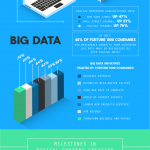How Will The Rise Of Crowdfunding Reshape How We Give To Charity?
Last September, a Chicago resident named Joel Cervantes Macias spotted an 89-year-old man named Fendicio hawking Mexican ice pops–they’re called “paletas”–out of a street cart. The man looked too old to be working, but Macias only had so much spare cash (and so much room for dessert). So he posted a picture of Fendicio on the charitable crowdfunding site GoFundMe, asking others to pitch in for a vacation.
That campaign, called “Relief for Fendicio the paleta man,” quickly went viral. It’s since become a sort of digital parable, which GoFundMe CEO Rob Solomon shares constantly to illustrate the power of social fundraising. “It spread across the Internet in a very short amount of time,” he says. “They thought they could raise $3,000 to help him but they ended up raising over $300,000.”
In Solomon’s view, this represents the power of a new cultural frontier, where one small action can lead to an unimaginable impact for good. It exists in a new place–“the giving layer of the Internet,” as Solomon puts it—that combines two previously distinct channels of online interaction, e-commerce and social sharing, into something far more democratic and altruistic. Through charitable crowdsourcing, virtually anyone can quickly start and share a campaign for any imaginable social issue, funneling the proceeds directly to a nonprofit group or person in need. As Solomon puts it, “We want to introduce new audiences and new donors to charities and nonprofits and we want to do it with as much transparency as possible.”
The Explosion Of The Giving Layer
While GoFundMe may be the largest global player in this space, it represents just a fraction of the new industry’s potential. Since launching in 2010, the platform has topped $3 billion in total contributions, playing host to other viral charity cases like the Chick-fil-A employee who suffered a car accident but was still working in a neck brace and Haus, the German Shepherd, who needed medical attention after saving a young girl form a rattle snake attack.
All told, the crowdfunding sector generated $34 billion in free-flowing cash in 2015, and is on pace to do nearly 10 times that within the next decade. (That’s generally broken into three main areas–person-to-person lending, donations, and equity investment–yet about 70% goes toward those in need, according to a Pew Research Center report).
The result is a vast pool of money that’s fundamentally shifting who is funding charitable work and how that work gets done. Viral campaigns may reach more potential donors but those givers often respond in an emotional as opposed to rational way: You’re paying to alleviate someone’s suffering, not the broader societal problem it represents. The result has left nonprofits scrambling for new ways to share their own community-minded messages within the medium.
Those nonprofits that do best are finding increasingly personalized ways to engage with donors, even if they’re still grappling with unpredictable gains. At the same time, crowdsourced windfalls can arrive with fewer strings, which leaves the individuals or groups who secure them with fewer checks-and-balances to make sure the money is spent as it was intended. For generations, most major cause-related funding was supplied by foundations, who often leveraged their involvement in a way that attracted other federal, state or institutional players to invest. To some of those major funders, the crowdsourced projects may resemble a risk-free field of startups. Let others take the early risks that they’ve had to grapple with, while they can double-down on what proves out.
Today, there are more than 3,500 social giving platforms internationally, according to NextGen Crowdfunding, a company that helps investors explore equity crowdfunding. In the U.S., that includes Kickstarter, Indiegogo and more niche platforms like Patreon, which lets people sponsor artists who do creative work. It still doesn’t account for just plain viral phenomena like the ALS Association’s Ice Bucket Challenge, in which 2.5 million people reportedly raised $115 million for research to battle the disease.
The old adage is that if everyone pitches in, some problems can be solved in no time. The key word there is some, not all. Here’s how an ever more customizable, democratized, and instantaneous philanthropy will shape the next giving age.
Expanding Aid For Everyone
First off, traditional cause groups should relax. Donations don’t seem to be shifting from places like the United Way or Salvation Army. While exact statistics are hard to come by, both Solomon and Richard Swart, the chief strategy officer at NextGen agree that giving layer participants are only expanding the pot of charitable dollars. “There’s always going to be a little bit of bleed over. Nothing is going to be absolutely discrete, but most people coming to support [these ventures] are typically millennials, not older donors,” says Swart.
Many of these new donors may have shared values with traditional groups and never acted on them, in part because traditional ways to reach them like telemarketing (no land lines) or direct mail (boring) are outdated.
Most millennials want to see their money make an immediate impact, according to early research by Bridgespan, which found that only requests for “tangible and immediate” aid resonates with this community. But crowdfunding itself has some inherent problems. To create a groundswell, you need lots of people to give a little. That doesn’t often happen. The average GoFundMe campaign raises just $1,500 dollars, and most are one-time asks, for things like medical expenses, funeral costs, or memorial funds.
In general, most nonprofits that have tried to mount their own campaigns on crowdfunding platforms have struggled with creating reliable revenue and retaining donors. An internal report from Bridgespan that looked at the operations of 10 well-known nonprofits on several platforms found that none were generating more than a third of their revenue from crowd-sourced campaigns. All struggled with donor turnover. “At this point, it’s not a cure-all for a nonprofit looking to raise a lot of money on a recurring basis, says Connor Skelly, one of the Bridgespan consultants who co-authored the report. “The takeaway for us is there’s a lot of hype going into this, but you shouldn’t set your expectations too high,” Skelly adds.
And there can be total disasters: In May, Nonprofit Quarterly reported that Kimbia, a local community-foundation platform, encountered a glitch during the sector’s annual Give Local America campaign. As their servers overloaded, some donations were processed incorrectly, costing at least 50 groups tens of thousands of gifts.
For nonprofits, Skelly thinks the true power of the giving layer may be less about sheer money than what it can do for brand awareness. While several million people donated to the ALS’s 2014 Ice Bucket Challenge, vastly more–17 million–made those painful videos. “The challenge suddenly made a lot of people who probably didn’t even know who Lou Gehrig was aware of the disease. It really changed the face of A.L.S. forever,” Brian Fredrick, the vice-president for communications and development at the A.L.S. Association, told The New Yorker in a follow-up story this summer. Most donors didn’t repeat their giving, but those who have stayed aboard remain more passionate and there are newcomers in the fold: Contribution size has reportedly increased by 25% while the average age of those contributors has dropped from 50 to 35, reaching a new generation of givers.
The Girl Scouts of America used Indiegogo to telegraph a broader statement about their values in mid-2015, after a bigoted donor asked the group to refund a $100,000 gift because it supported transgender girls. The group returned the money and then launched an Indiegogo campaign to make up the difference, highlighting their commitment equality and to inclusivity with a video and the hashtag #ForEveryGirl. That appears to have given donors extra incentive to rally, resulting in three times the original sum. “We found that for a lot of campaigns the really important thing is the awareness and then the donations,” Skelly adds.
GoFundMe, which projects that it will handle $40 billion in transactions within the next decade, is now being used for everything from medical bills, to college tuition, and sports league dues. Plus it drives major revenue for organizations on days that the public is primed to click over. That includes Giving Tuesday, and, increasingly, major outpourings of support during mass tragedies like last year’s Pulse nightclub shooting in Orlando and the flooding in Louisiana.
In January, it acquired CrowdRise, a competitor that lets users build profile pages, and could evolve into the sort of online community where charity supporters are able to tell their personal stories to rally more money toward causes at large. “In essence, you’re kind of atomizing causes for these big nonprofits, you’re able to break it down from the big monolithic organization to individual stories and the very specific things that they’re helping,” Solomon says.
Booting Up A Support Network
In a way, crowdfunding works because so many charitable safety nets are overwhelmed. “There is just so much need that it is hard for everyone to keep up,” says Vu Le, who runs the candid industry commentary site Nonprofit With Balls and hosts similar Facebook-based networking groups. “We expect nonprofits to operate as businesses but without the same level of flexibility that allows them to succeed,” he adds, noting that grants often restrict funding and create unrealistic expectations about overhead. “One of the challenges is we as nonprofits aren’t moving fast enough, but so much of the work is not doing the work, it is justifying the work.”
It’s hard to tell whether those in need aren’t aware of these groups or their needs aren’t being met by them—that’s one arena that many crowdfunding platforms have been reluctant to gather statistics. Either way, the industry has arisen as another societal safety net disappeared. Michael Nilsen, vice president of communications and public policy at the Association of Fundraising Professionals, considers crowdfunding a natural reaction to Americas shift toward “bowling alone,” a reference to the Robert Putnam book that explains how as our lives have become more virtually connected, we’ve lost touch with the social groups that once provided a real life support network.
For individuals in need, requests like the few hundred bucks they need to prevent whatever tragic twist of fate is going to screw up life until the next paycheck might have once happened over the back fence or at a block party. “There’s a cultural tradition of philanthropy in our country where you help your neighbor or when you see someone in trouble you go help them,” Nilsen says. “We’re seeing these worlds merge a little bit with places like GoFundMe.”
At the same time, the direct nature of such giving reduces concern over what happens when it enters the nonprofit labyrinth. More than a third of Americans distrust charity, according to a report from the Chronicle of Philanthropy. While most Americans believe the right amount to give to charity is at least 6% of your annual income, we’re all giving roughly half that, leaving behind about $250 billion in would-be funding, according to a recent survey by Ideas42, a behavioral science firm that specializes in designing changes for social good.
In contrast, crowdfunding transactions are ruled by social pressure, says Josh Wright, Ideas42’s co-executive director. In general, most people already have a tendency to give impulsively rather than following through with a rational plan that includes research about how to make the most long-term change. Crowdfunding amplifies that because the solicitations are often personal, coming from someone you know, or inspired by the giving of your social network.
That’s not necessarily a good thing. After all, helping one homeless person does little to address the complex mix societal, economic, and legislative factors that may be making life difficult for others. Same for widespread issues like poverty, racial and gender inequality, or healthcare and education reform. “It gets people away from giving intentionally to solve [larger societal] problems that they care about and it causes them to give to the most heart-string-pulling story,” Wright says. That runs opposite emerging philanthropic philosophies like effective altruism, which advocates donating in ways that can make the most quantifiable impact on society at large.
Besides, the neediest individuals still face one major limitation. It wasn’t Fendicio who launched his own GoFundMe; it was a passerby with the right tools, connectivity, and knowhow. Many people in extreme circumstances face that digital divide. These people may rely heavily on existing types of aid while, over time, people may become less enthusiastic about funding it.
Even those with internet connections may get lost in the shuffle—the Pew report notes that many requests are met with disappointment—as only the most sensational stories go viral. “If we always appeal to people’s sense of emotion, the danger is that we start to other-ize those who need help,” adds Le from NonprofitWithBalls. “When crowdfunding is done wrong it can foster a sense of pity rather than social justice. That emotion leaves behind some of the less appealing causes that are equally important.”
Making Foundational Change
Perhaps the biggest question is whether crowd-driven money will be allocated effectively as the industry grows. Users now solicit aid for everything from buying alcohol, to attending Burning Man, and supplying themselves with a new treadmill.
One major issue is that by acting as neutral facilitators many platforms leave themselves open to being manipulated in the same ways that Facebook has to promote fake news, or Twitter for bullying. Earlier this year, the alt-right found a way around GoFundMe’s code of conduct, essentially hijacking the site to advertise hate, driving dollars toward highly questionable political causes, which GoFundMe is now on the record as having abetted.
Still, the movement is now funding different groups, from budding nonprofits with their own missions to social-good business ventures in otherwise neglected U.S cities and international hot zones. For foundations, some of these community-backed bets represent places where they might eventually invest more wisely, especially if the funding goes toward an intervention or group whose novel solutions prove out.
According to UC Berkeley research published in the journal Science, many venture capitalists have been using Kickstarter as a road map to spot the spaces and places where they should be investing. While crowdfunding “has been funding innovators in a large number of places that have typically been excluded” from venture capital “[it] has also been expanding the geographic reach of VC itself,” reads the report. In the US, roughly 50% of companies using Regulation Crowdfunding–those private investments going towards business, which can improve communities–are located in economically depressed inner city areas.
NextGen’s Swart, who advises both the Bill and Melinda Gates Foundation and Rockefeller Foundation, says that playbook may be transportable to the developing world. In fact, many major foundations are considering using crowdfunded campaigns “as a discovery mechanism” for spotting aid groups with innovative health, poverty or resilience solutions who understand the delicate cultural, historical, and political issues often at play in some regions.
Several crowdfunding platforms like Allied Crowds and Kiva are already set up to help investors and beneficiaries alike navigate the tricky business of financing international deals that have a broader social good. In terms of federal aid, the U.S. government could also take a cue from the British, who at one point instituted a program to cover the last 10% of financing for crowdfunded projects that result in community-improving solutions.
Accounting For Greater Change
In essence, all of these charitable crowdfunding platforms operate on the same basic principle: That the beneficiaries themselves know best much how they need and how to spend it. GiveDirectly, which uses mobile phones to transfer cash directly to people in extreme poverty, enlists its field team to help identify recipients before allotments are doled out. The process, along with strict accountability for how much they spend on it, has earned the group a top rating from GiveWell.
Although donors don’t know exactly who gets their money, the group shares proxies through personal stories from villagers that they collect and post to a community platform called GD Live. “Eventually we close the loop on the conversation with the giver to where people can go and see who these people are and what they use the money for,” says GiveDirectly Chief Marketing Officer Matt Johnson.
To prove that, GiveDirectly funds independent studies to track the impact of their money in the communities that receive it. They post those publicly and adjust as new findings come out. That’s another way of creating trust, which has let the group test new concepts like providing some recipients a universal basic income or providing support to refugees.
Such tactics appear to be making donors more confident about investing in the same cause more often. In 2016, GiveDirectly’s donor pool grew at a rate of 40% year-over-year, with about half those people becoming repeat donors. With more trust comes heavier investment: The average donation has grown to about three times more than what people give via GoFundMe.
People still appear willing to give to organizations–and repeatedly–if they can mimic the level of supposed transparency that makes crowdfunding appealing. Such groups may even offer an additional benefit at a time when more sites seem to catalog almost every type of human suffering. “You see all those cases and they keep coming,” adds Nilsen at AFP. “Giving to a charitable organization is one way to feel like you are a part of something bigger.”
It’s probably not a coincidence that GoFundMe and GiveDirectly both operate extremely lean and clearly show where each donation will wind up. Both are enabling person-to-person transactions with trust that recipients themselves will know how best to use the funds. Even in the cases of a specific GoFundMe going viral, there’s no mandate for campaigns to have to explain how the overflow will be used, beyond the fact that lots of people are obviously now watching.
For nonprofits, the broader takeaway may be to find equally seamless ways to personalize their impact. For instance, DonorsChoose, which helps teachers fund classroom projects, has built its own platform and seen giving spike when they match donor and teacher names, or match donors to the types of project they may already have an affinity for. Charity: water, which digs wells and completes water purification projects does much the same thing by matching donation amounts to a specific project that’s publicly mapped to share more about the location, community, and more recently current water flow.
For aid groups, Nilsen says the next step might be to simply cooperate more closely with crowdfunding platforms themselves. He imagines the sort of partnership where everyone shares data to figure out what kinds of traditional coverage gaps exist, why, and how groups can better help address them. Such collaborations could have the power to shift or inspire new policies, especially if it looks like everyone who needs healthcare is trying to go viral.
Fast Company , Read Full Story
(33)














